Calcitonin gene-related peptide pre-administration acts as a novel antidepressant in stressed mice
- PMID: 26251188
- PMCID: PMC4528222
- DOI: 10.1038/srep12559
Calcitonin gene-related peptide pre-administration acts as a novel antidepressant in stressed mice
Abstract
Calcitonin gene-related peptide (CGRP) is a neuropeptide that has potent vasodilator properties and is involved in various behavioral disorders. The relationship between CGRP and depression-like behavior is unclear. In this study, we used chronically stressed mice to investigate whether CGRP is involved in depression-like behavior. Each mouse was exposed to restraint and water immersion stress for 15 days. After stress exposure, mice were assessed using behavioral tests: open field test, forced swim test and sucrose preference test. Serum corticosterone levels, hippocampal proliferation and mRNA expression of neurotrophins were measured. After stress exposure, mice exhibited depression-like behavior and decreased CGRP mRNA levels in the hippocampus. Although intracerebroventricular CGRP administration (0.5 nmol) did not alter depression-like behavior after 15-day stress exposure, a single CGRP administration into the brain, before the beginning of the 15-day stress exposure, normalized the behavioral dysfunctions and increased nerve growth factor (Ngf) mRNA levels in stressed mice. Furthermore, in the mouse E14 hippocampal cell line, CGRP treatment induced increased expression of Ngf mRNA. The NGF receptor inhibitor K252a inhibited CGRP's antidepressant-like effects in stressed mice. These results suggest that CGRP expression in the mouse hippocampus is associated with depression-like behavior and changes in Ngf mRNA levels.
Figures
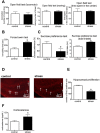
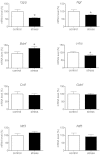

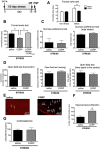


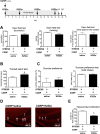
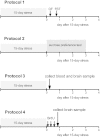
Similar articles
-
Chronic unpredictable mild stress decreases BDNF and NGF levels and Na(+),K(+)-ATPase activity in the hippocampus and prefrontal cortex of mice: antidepressant effect of chrysin.Neuroscience. 2015 Mar 19;289:367-80. doi: 10.1016/j.neuroscience.2014.12.048. Epub 2015 Jan 12. Neuroscience. 2015. PMID: 25592430
-
The effects of a standardized Acanthopanax koreanum extract on stress-induced behavioral alterations in mice.J Ethnopharmacol. 2013 Jul 30;148(3):826-34. doi: 10.1016/j.jep.2013.05.019. Epub 2013 May 27. J Ethnopharmacol. 2013. PMID: 23721913
-
Roman chamomile inhalation combined with clomipramine treatment improves treatment-resistant depression-like behavior in mice.Biomed Pharmacother. 2019 Oct;118:109263. doi: 10.1016/j.biopha.2019.109263. Epub 2019 Jul 29. Biomed Pharmacother. 2019. PMID: 31369988
-
Epigenetic Alterations in DNA and Histone Modifications Caused by Depression and Antidepressant Drugs: Lessons from the Rodent Models.Curr Pharm Des. 2017;23(44):6828-6840. doi: 10.2174/1381612823666171031110734. Curr Pharm Des. 2017. PMID: 29086676 Review.
-
Calcitonin gene-related peptide in the brain. Neurochemical and behavioral investigations.Ann N Y Acad Sci. 1992 Jun 30;657:164-9. doi: 10.1111/j.1749-6632.1992.tb22765.x. Ann N Y Acad Sci. 1992. PMID: 1637082 Review.
Cited by
-
Analysis of the DNA methylation pattern of the promoter region of calcitonin gene-related peptide 1 gene in patients with episodic migraine: An exploratory case-control study.Neurobiol Pain. 2022 Apr 2;11:100089. doi: 10.1016/j.ynpai.2022.100089. eCollection 2022 Jan-Jul. Neurobiol Pain. 2022. PMID: 35445161 Free PMC article.
-
Characteristics of sensory neuronal groups in CGRP-cre-ER reporter mice: Comparison to Nav1.8-cre, TRPV1-cre and TRPV1-GFP mouse lines.PLoS One. 2018 Jun 4;13(6):e0198601. doi: 10.1371/journal.pone.0198601. eCollection 2018. PLoS One. 2018. PMID: 29864146 Free PMC article.
-
Effects of 3 Weeks of Water Immersion and Restraint Stress on Sleep in Mice.Front Neurosci. 2019 Oct 14;13:1072. doi: 10.3389/fnins.2019.01072. eCollection 2019. Front Neurosci. 2019. PMID: 31680813 Free PMC article.
-
HSP105 prevents depression-like behavior by increasing hippocampal brain-derived neurotrophic factor levels in mice.Sci Adv. 2017 May 31;3(5):e1603014. doi: 10.1126/sciadv.1603014. eCollection 2017 May. Sci Adv. 2017. PMID: 28580422 Free PMC article.
-
Alleviative effects of fluoxetine on depressive-like behaviors by epigenetic regulation of BDNF gene transcription in mouse model of post-stroke depression.Sci Rep. 2017 Nov 2;7(1):14926. doi: 10.1038/s41598-017-13929-5. Sci Rep. 2017. PMID: 29097744 Free PMC article.
References
-
- Joëls M. et al. Effects of chronic stress on structure and cell function in rat hippocampus and hypothalamus. Stress 4, 221–231 (2004). - PubMed
-
- Berton O. & Nestler E. J. New approaches to antidepressant drug discovery: beyond monoamines. Nat Rev Neurosci. 2, 137–151 (2006). - PubMed
-
- Bulloch K. et al. Induction of calcitonin gene–related peptide-like immunoreactivity in hippocampal neurons following ischemia: a putative regional modulator of the CNS injury/immune response. Exp. Neurol. 150, 195–205 (1998). - PubMed
-
- Van, Rossum D., Hanisch U. K. & Quiron R. Neuroanatomical localization, pharmacological characterization and functions of CGRP, related peptides and their receptors. Neurosci. Behav. Rev. 21, 649–678 (1997). - PubMed
-
- Skofitsch G. & Jacobowitz D. M. Autoradiographic distribution of 125I calcitonin gene-related peptide binding sites in the rat central nervous system. Peptides 6, 975–986 (1985). - PubMed
Publication types
MeSH terms
Substances
LinkOut - more resources
Full Text Sources
Other Literature Sources
Medical
Research Materials

